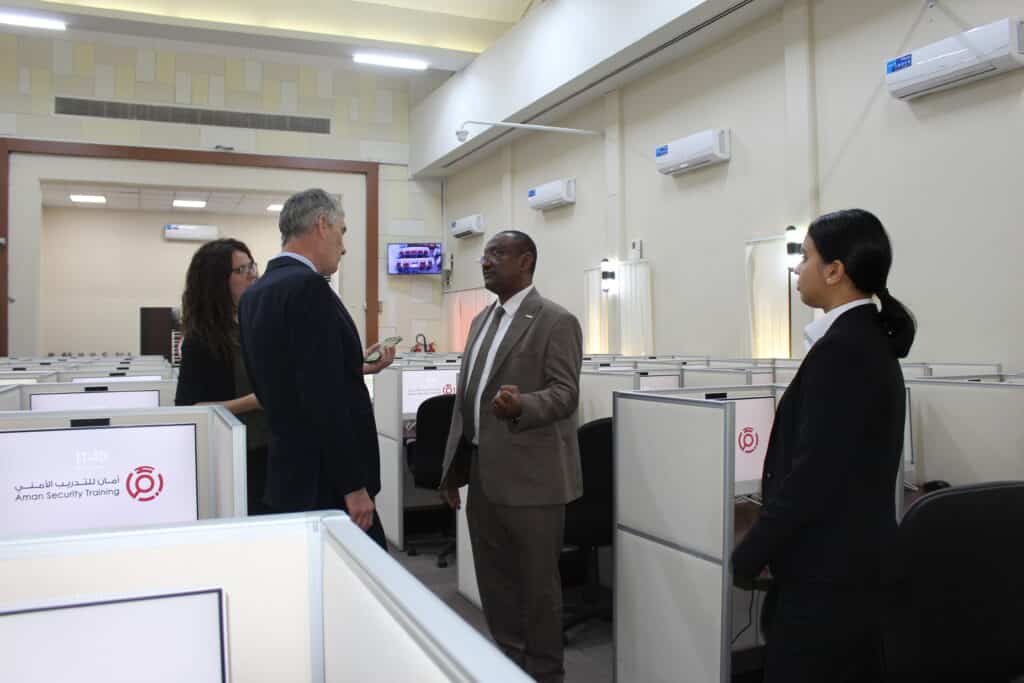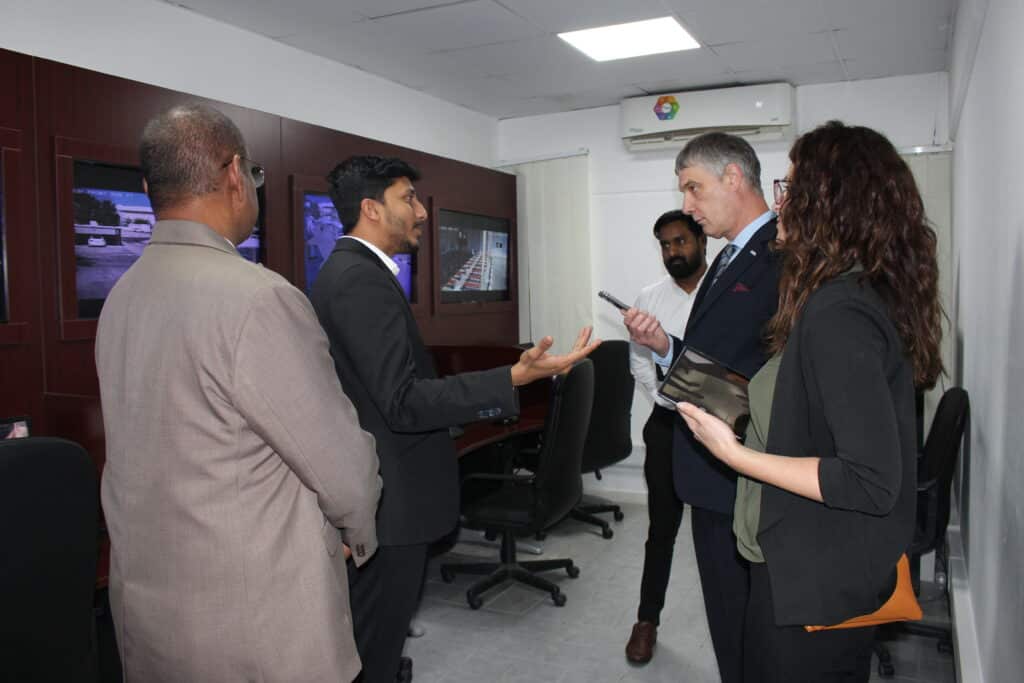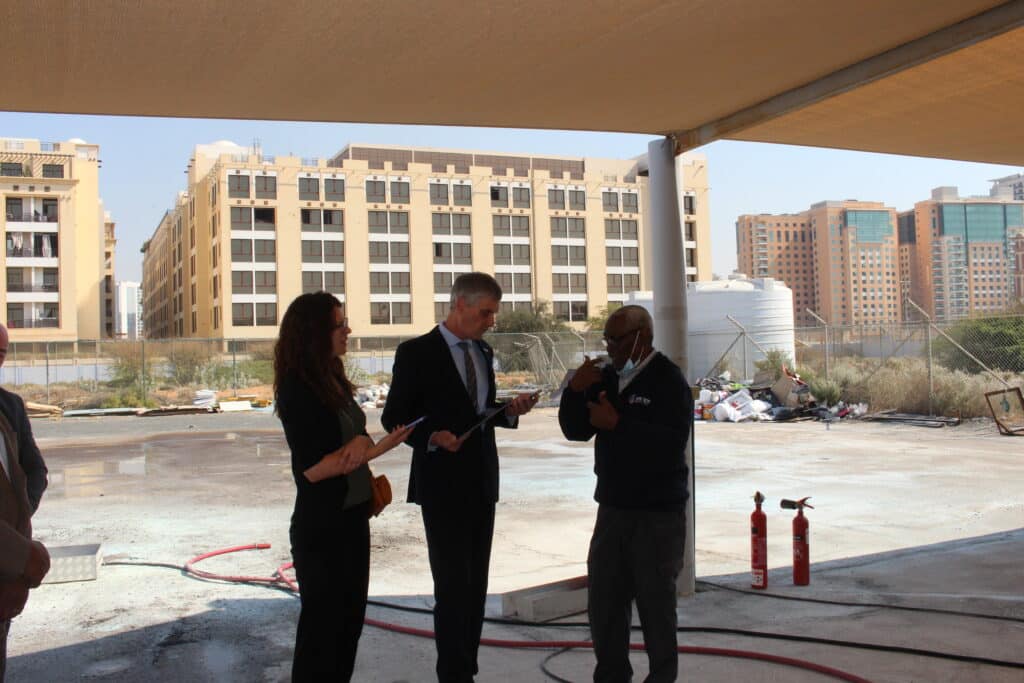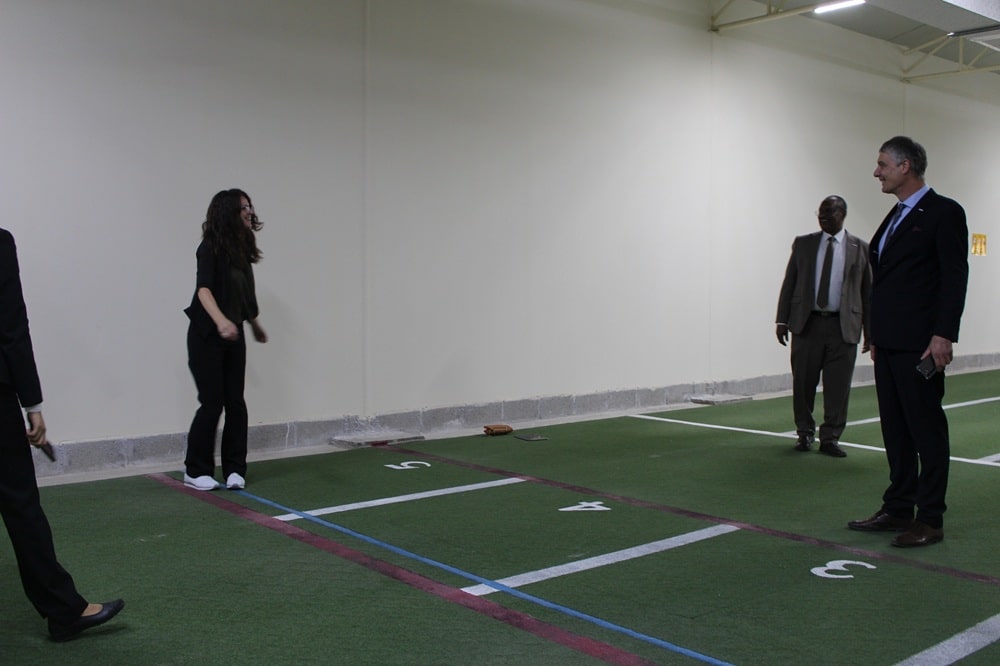Last January, I had the opportunity to visit the Aman Training Centre—an institution accredited by the Security Industry Regulatory Agency (SIRA) and a key supporter of the Professional Security & Safety Alliance (PSSA). During this visit, I toured the facility and explored its diverse training programs. In Part 1 of this series, we presented a general overview of the centre and its objectives. This month, we take a closer look at the actual training offered on-site.
Comprehensive Training for Licensing
To qualify for licensing, trainees must complete the International Security Guard course along with essential safety modules. These include Basic Life Support, Fire Safety, and POD Training (People of Determination – Access and Inclusion). Physical fitness is also a prerequisite, and candidates must pass the widely recognised “beep test,” a rigorous assessment used in law enforcement.
Each training day runs from 7:00 AM to 3:00 PM, and the curriculum includes both region-specific and internationally recognised certifications.

Guided Tour and Technical Instruction
We were welcomed and guided by Mr. Yousef Hamida one of the centre’s senior lecturers. He led us through a detailed orientation and walkthrough of various training areas, highlighting the scope and quality of activities underway.
The Aman Training Centre offers a four-day course for technicians and a five-day course for engineers, with contributions from subject-matter experts from the United Kingdom. These programs culminate in a practical assessment and written examination, ensuring trainees meet stringent performance standards.
One notable strength of the centre is its neutrality—it does not align with any commercial brands or promote specific devices. Instead, training focuses on core technical skills, allowing students to work confidently across different systems and technologies.

CCTV Operator Training: Real-World Simulations
Our next stop was the technical training zone dedicated to the CCTV Operators Course. Here, students were fully immersed in a realistic simulation of a control room. They were actively engaged in tasks such as:
- Operating PTZ (Pan-Tilt-Zoom) cameras
- Conducting suspect-tracking scenarios
- Practicing incident escalation and reporting protocols
Mr. Safeer, one of the instructors, explained:
“The students in this course are already working in the field. We provide them with core training to begin control room operations and ensure their performance aligns with professional standards.”
In a typical control room environment, operators must monitor surveillance systems, identify potential threats, respond rapidly, maintain detailed logs, and coordinate with security teams. The training here emphasises vigilance, decision-making, and technical competence.
Fire Safety Training: Realistic and Practical
We moved on to observe a hands-on fire safety session, where students practiced using fire hoses, fire blankets, and various extinguishers. They were trained in both indoor and outdoor scenarios, taking into account wind direction, environmental factors, and situational dynamics.
I asked: “So, there are more factors to consider than one might expect? Environmental conditions and different extinguishers for different types of fires?”

Mr. Yousif responded: “Yes, many considerations. For example, type A extinguishers for water, type B for foam, and type C its smothering fire& chain breaking – using CO2 or Dry Powder. Trainees must understand the appropriate use for each situation.”
I followed up: “Do trainees have any prior knowledge before attending this course?”
He replied: “No, these are new security guards just starting. We begin with the basics. Many return a year later for skills development and refresher training.”
“The emphasis is on risk assessment, situational analysis, and applying suitable solutions—key competencies for any security professional.”

Fitness and Final Assessments
As we neared the end of our tour, we visited the fitness facility, where trainees undergo rigorous physical evaluations. In addition to the “beep test,” candidates complete various strength and endurance exercises.
Final Impressions and Outcomes
What stood out most during my visit was the high level of professionalism, the depth of the training, and the positive learning atmosphere. The staff were supportive, and the trainees were focused, motivated, and engaged.
Mr. Yousef shared that while the passing mark is 60%, most trainees achieve scores of 75% or higher before receiving certification and official accreditation. This is particularly impressive given that many arrive with no prior security experience, yet are fully certified within just five days.
Importantly, training doesn’t end with initial certification. The centre also offers refresher courses, ensuring that licensed professionals remain current and prepared for evolving industry challenges.
For more PSSA news, click here





